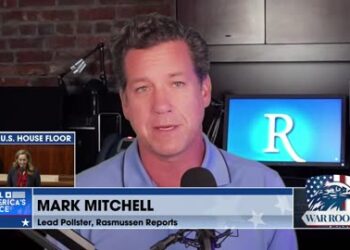This clip aired on WarRoom’s morning show on November 12, 2025.
Transcript begins below (lightly edited for clarity; may contain minor errors).
STEVE BANNON (HOST): “I talked about it here—remember the Economist interview I gave—the coming debt emergency. How’s the coming debt emergency triggered? The coming debt emergency is triggered by what—this is a concept you should write down—a failed Treasury auction.
Where the demand, you know, we get so much debt at the price we want to sell them at that there’s resistance in the market, or that a Treasury auction, which goes on essentially every day or every couple of days, fails. And that has a chain reaction that you start to "reprice risk.”
And the way they reprice it is higher. This is what the Charlie Gasparino theory is right now on why you can’t totally get inflation under control—that three percent. Gasparino’s been doing this a long time, says that Wall Street, and particularly maybe even Treasury and the Fed, are signaling that maybe three percent is their new target.
I don’t happen to think that. But three percent is not insignificant. Of course, it’s orders of magnitude lower than the Biden fiasco that started this. But it’s not the traditional two, which I think is the Fed target. And that hundred basis points—that one percent—is a big deal, because that rolls all the way through to your credit cards, your home mortgage, all of it.
In fact, that’s one of the underlying beliefs of the 50-year mortgage. I’m not defending it, but one of the things they’re saying is that with interest rates at a certain height, you do get the lower payment—the lower monthly payment. If you’ve got to make that in a car payment, and you’ve got to pay credit card debt, if you’ve got two, three, four things you’re paying off, every couple hundred bucks you save on that is worth it in the short term—and then you refinance it when you get into a better financial situation.
I understand, 50 years is a long time to have a mortgage. The 50-year mortgage in and of itself is not a solution. Maybe it’s a tool in the toolbox, particularly for people that want the option, but it’s not a solution.
I also don’t think it was presented as a solution. I don’t think President Trump ever said, "Hey, this is going to solve the affordability crisis in homes.” I think it was another tool in the toolbox. I think the way it got put out there… but the guy that presented it to him, you know, particularly unvetted or not—hey, this is a package of what we’re going to do.
And I think Benny Johnson and Andrew over at Turning Point—this is one of Charlie’s big things about some sort of moonshot or some sort of Marshall Plan or something for the affordability and particularly the home crisis, as Vice said.
They got crushed by the Bolsheviks, but someone gave them some muscle—particularly in St. Petersburg and Moscow—provided a little muscle because they didn’t see an alternative.
This is why you’ve got Zohran in Manhattan. You’ve got a Marxist jihadist. As I said at the National Conservative Convention, the threat to Israel and the threat to the Jewish people, principally, is not coming from Tehran. The obsession with that—this obsession with that—has now a two-state solution.
You’ve got a two-state solution with the Muslim Brotherhood financier and the Turks running security and the Muslim Brotherhood financiers writing the checks. The threat is in New York City.
How do we get to New York City? Because kids—and you look at all these things—well, they’re looking at socialism. They don’t like capitalism. They never had capitalism. They’ve had globalism. They’ve had corporatist globalism.
That’s not free-market entrepreneurial capitalism. And the first thing you have to do is protect your citizens. Hell, we’re protecting industries—that’s what tariffs are. I know they don’t want to talk about it.
The T word is based upon the P word. You are protecting certain industries. This is why the Republican, this is why Conservative Inc. hates it—because they’re all raised on Milton Friedman.
Being raised on Milton Friedman is, to me, just like being raised on John Maynard Keynes. You get two sides, but you don’t really get solutions. President Trump’s offered you a solution.
The supply-side tax cut focuses on massive investments in productive capital, plant, and equipment—coupled with trade policy and commercial relationships with the world where you’ve got a choice: you’re going to build it here and create jobs, or you’re going to pay a tolling fee. Take your pick.
And use the tolling fee—the tariffs—as a forcing function. But the whole purpose of it is not then to invite the world back in. Hey, we’d invite them back in, particularly from Asia—particularly from India and China.
Why would you invite massive immigration here on some sort of visa program to take those jobs away from Americans?
Now, if Scott Bessent is saying, "Oh, they’re only here for a couple of years to train people”—on this one now, I think we’re all from Missouri. I think all the numbers have to be put out, including the investment of the foreign company. The best way to make your case is to make your case.
The theory of it, and what you’ve done so far to execute it, is quite frankly brilliant—nothing short of brilliant—of President Trump’s plan.
Just now, let’s show some math. Let’s show the projections. And let’s show if there are certain areas where the American worker in this plan is not up to speed and skills. Nobody faults getting up to skills.
I’ve got to have Lutnick or the Department of Labor, or somebody, put those numbers out—and I think show folks.”




